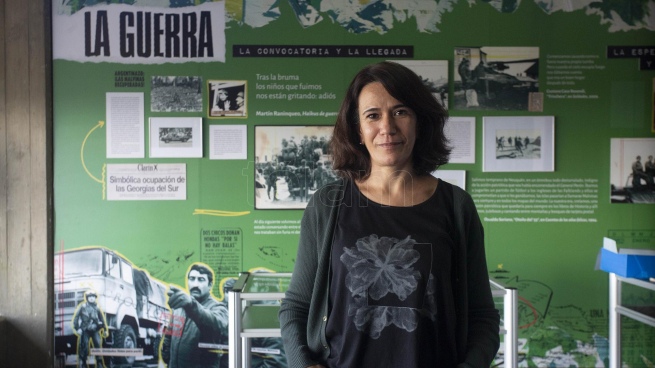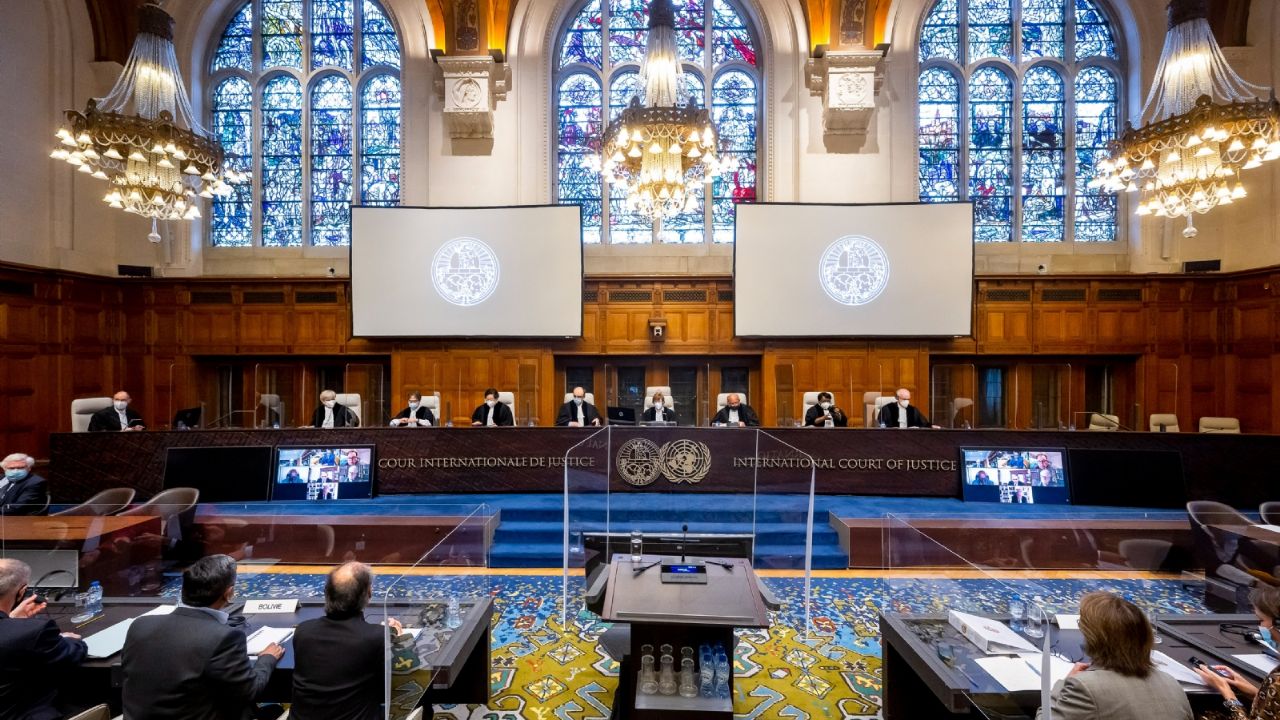40 years after the Falklands War, the Mariano Moreno National Library will host the shows “Count Falklands”an exhibition from which different axes emerge, made up of the ex-combatants testimonials whose experiences are interwoven with other discourses: those of the pressthe literatureand those of documents that propose, articulated, a journey made by heterogeneous voices and gazes about the islands and the armed conflict.
Initially, the curators of the exhibition, Fernanda Olivera and Diego Forte, gathered the literature records with materials kept in its collection by the National Library. However, in the process they noticed that between those two speeches the voice of the ex-combatants was missing.
“So we got in touch with some of them, did interviews and their testimonies helped us central axis to articulate the other speeches,” Olivera told Télam.
“We wanted to account for that polyphony that is Malvinas. We want all those speeches that make it up to be in the room at the same time: while an ex-combatant tells us about a particular episode of the warthere is a quote that represents a similar episode but in the fiction. There is the speech of presswhich in turn tells the same episode in a different and particular way, and on the other hand, the official voicethat of the State, where the hard datarather chronologicalwhere the episodes of the war are told”, details the curator.
Background to the Falklands War
The sample is displayed chronologically from a time travel: to understand the Malvinas war it is necessary to go back to the century XVI and go through fundamental milestones that happened until the 19th century.
“When they talk about the Malvinas, especially those of my generation (I’m 43) and even younger, they only talk about the war. What we wanted to do is present where did i start from this conflict with Great Britain. In addition, the previous records of the island discoveriesthe first sightings french and dutchwho got there first, what happened,” explains Forte.
In the first showcase documents are exhibited where it appears that the first to settle on the islands are French. At this point, it is possible to find the seed of the conflict “because the British enter the territory while the French colony was already being established“, says the curator.
Then the Government of Spain realizes that both the French and the English are getting involved, then arrange with the French to get them out,” Forte continues the chronology of events.
“In a document appears what we call homely `the sale ticket`, which is the original that France gives to the king of Spain saying `I accepted so much money for leaving my colony to the Spanish crown`”, details the curator and adds: “that is, there is a document that says that `this was from Spain` and later it passed to Argentina with independence“.
In addition, in this part of the route a report presented by the former governor of the islandsLuis Vernet, dating from August 10, 1832, detailing that boats were intercepted who entered to fish in Malvinas.
“While Vernet is in Buenos Aires, the British who were hidden in the islands, they take power and stay with the territory”, adds the curator.
“The first formal claim of Argentina for the Malvinas Islands was signed by Manuel Moreno“, specifies Forte, and adds that this detail “is important because as of 1833, Argentina did not stop formally claiming the islands for a single year.
Malvinas in literature
At the start of twentieth century, the claims on Malvinas charge another thickness. In fact, at this time “perhaps one of the most important works of Argentine literature was born that has to do with something that Congress commissioned from the French writer Paul Groussac, who was director of the National Library,” says Forte.
“Count Falklands” exhibits the original book of Groussac in French version in one of its showcases. “They commissioned him to write about the Falkland Islands,” says the curator. Along with the work of the French author is a “compendium for circulation in schools” of the year 1936 which includes “geographical historical approaches where the fauna and flora“, he points out. There is also a novel titled “War in the Malvinas, by the writer Ubaldo López Cristóbal, which “Fernanda found in the Treasury”, according to Forte.
“Is a novel from the 30s that proposes going to recover the Malvinas in a fictional context in which a young man from Buenos Aires wants to marry the daughter of a British man who lives here. The British father tells the young man that he belongs to a lower racethere is a whole discussion and the man from Buenos Aires replies `I’m going with 100 Creoles and we’ll take back the islands'”, says Forte and adds: “there are many similarities with what happened in `82”.
The showcase also includes the exhibition of the socialist deputy Alfredo Palacios in Congress. “The idea we have of the Malvinas in terms of resources gives me the impression that it comes from this time because it has to do as much with what Groussac wrote as with what Palacios took up. Here is the idea of the wealth that a country is losing in foreign hands”, analyzes Forte.
The return home
the axis of postwar periodwhere the color blue with white letters prevails, exhibits a document donated by Gabriel Espir, ex-combatant, entitled “Army counterintelligence document“.
“It has a lot of items where it is recommended don’t talk, don’t recount war scenes, don’t answer questions. They made them sign a Silence pact“, specifies the curator.
The first year after returning to the continent, the demonstrations demanding recognition of the soldiers. In the sample, photographs are exhibited where the mobilizations and the act that the Malvinas veterans carried out in the English Tower“where they set fire english flags and they threw down the canning monument“, details Olivera and adds that “after this demonstration begins the period of demalvinizationwhere the silence is going to be almost complete”.
At the end of the tour, the wall that brings together post-war stories includes a quote from the book “Las Islas”, by Carlos Gameroa novel that tells the story of Felipe Félix, a former Malvinas combatant who meets with others to plan new ways to recover the islands.
For Olivera, this quote “is the best” because the narrator states: “We left a precise space when we left, but there we changed shape, and when we came back we no longer fit in, no matter how many turns they gave us, in the puzzle; we returned ten thousand enlightened, crazy, cursed prophets, and there we are, (…) somewhere always knowing that something of our value and indefinable was buried there“.














